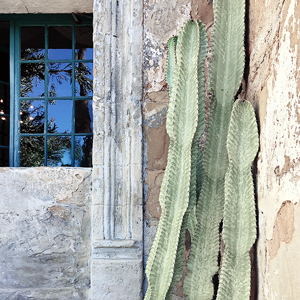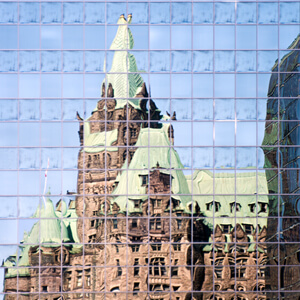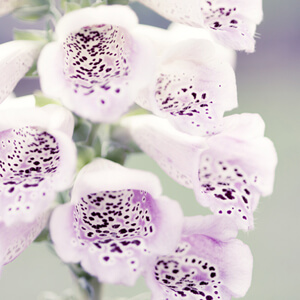Blog › Archive › Daring Bakers
Daring Bakers: Dobos Torte
The August 2009 Daring Bakers' challenge was hosted by Angela of A Spoonful of Sugar and Lorraine of Not Quite Nigella. They chose the spectacular Dobos Torte based on a recipe from Rick Rodgers' cookbook Kaffeehaus: Exquisite Desserts from the Classic Caffés of Vienna, Budapest, and Prague.
I had a great time participating in this month's challenge. The recipe was easy enough to follow and instead of making one Dobos Torte I decided to make a few bite-sized ones;
I got 17 2" 6-layered Dobos Tortes to be exact.
At first I thought of making them rectangular or squared but the sponge cake layers turned out thin enough so; I could just cut them with a cookie cutter. Hence the floral shapes.

I had to try and tie it to my fine art floral images somehow.
I must admit that spreading that buttercream and covering the floral shaped Dobos Tortes was quite challenging. I should probably put round cookie cutters on my wish list in case I want to make this recipe again.
Because the tortes were so tiny and because it is way too hot in Texas I decided to skip the caramel topping and make caramel brittle instead. Just enough to decorate the tortes for the photo shoot.
Since the recipe was not designed for 17 bite-size tortes there wasn't enough buttercream to go around all of them, but that did not stop them from being eaten. I think they were as delicious as the ones that were covered in buttercream from head to toe and a little bit easier to handle.
As to the sponge cake leftovers; they went pretty well with a cup of tea and a few slices of cheese and they were great in the Tiramisu I made last weekend.
Dobos Torte
Makes one 8" torte
Ingredients
- For the sponge cake layers:
- 6 large eggs, separated, at room temperature
- 1 1/3 cups (162g) confectioner's (icing) sugar, divided
- 1 teaspoon (5ml) vanilla extract
- 1 cup plus 2 tablespoons (112g) sifted cake flour (SUBSTITUTE 95g plain flour + 17g cornflour (cornstarch) sifted together)
- pinch of salt
- For the chocolate buttercream:
- 4 large eggs, at room temperature
- 1 cup (200g) caster (ultrafine or superfine white) sugar
- 4oz (110g) bakers chocolate or your favourite dark chocolate, finely chopped
- 2 sticks plus 2 tablespoons (250g) unsalted butter, at room temperature.
- For the caramel topping
- 1 cup (200g) caster (superfine or ultrafine white) sugar
- 12 tablespoons (180 ml) water
- 8 teaspoons (40 ml) lemon juice
- 1 tablespoon neutral oil (e.g. grapeseed, rice bran, sunflower)
Directions
- Preparing the sponge cake layers:
- Position the racks in the top and centre thirds of the oven and heat to 400F (200C).
- Cut six pieces of parchment paper to fit the baking sheets. Using the bottom of a 9" (23cm) springform tin as a template and a dark pencil or a pen, trace a circle on each of the papers, and turn them over (the circle should be visible from the other side, so that the graphite or ink doesn't touch the cake batter.)
- Beat the egg yolks, 2/3 cup (81g) of the confectioner's (icing) sugar, and the vanilla in a medium bowl with a mixer on high speed until the mixture is thick, pale yellow and forms a thick ribbon when the beaters are lifted a few inches above the batter, about 3 minutes. (You can do this step with a balloon whisk if you don't have a mixer.)
- In another bowl, using clean beaters, beat the egg whites until soft peaks form. Gradually beat in the remaining 2/3 cup (81g) of confectioner's (icing)sugar until the whites form stiff, shiny peaks. Using a large rubber spatula, stir about 1/4 of the beaten whites into the egg yolk mixture, then fold in the remainder, leaving a few wisps of white visible. Combine the flour and salt. Sift half the flour over the eggs, and fold in; repeat with the remaining flour.
- Line one of the baking sheets with a circle-marked paper. Using a small offset spatula, spread about 3/4cup of the batter in an even layer, filling in the traced circle on one baking sheet. Bake on the top rack for 5 minutes, until the cake springs back when pressed gently in the centre and the edges are lightly browned. While this cake bakes, repeat the process on the other baking sheet, placing it on the centre rack. When the first cake is done, move the second cake to the top rack. Invert the first cake onto a flat surface and carefully peel off the paper. Slide the cake layer back onto the paper and let stand until cool. Rinse the baking sheet under cold running water to cool, and dry it before lining with another parchment. Continue with the remaining papers and batter to make a total of six layers. Completely cool the layers. Using an 8" springform pan bottom or plate as a template, trim each cake layer into a neat round. (A small serrated knife is best for this task.)
The sponge cake layers can be prepared in advance and stored interleaved with parchment and well-wrapped in the fridge overnight.
- Preparing the chocolate buttercream:
- Prepare a double-boiler: quarter-fill a large saucepan with water and bring it to a boil.
- Meanwhile, whisk the eggs with the sugar until pale and thickened, about five minutes. You can use a balloon whisk or electric hand mixer for this.
- Fit bowl over the boiling water in the saucepan (water should not touch bowl) and lower the heat to a brisk simmer. Cook the egg mixture, whisking constantly, for 2-3 minutes until you see it starting to thicken a bit. Whisk in the finely chopped chocolate and cook, stirring, for a further 2-3 minutes.
- Scrape the chocolate mixture into a medium bowl and leave to cool to room temperature. It should be quite thick and sticky in consistency.
- When cool, beat in the soft butter, a small piece (about 2 tablespoons/30g) at a time. An electric hand mixer is great here, but it is possible to beat the butter in with a spatula if it is soft enough. You should end up with a thick, velvety chocolate buttercream. Chill while you make the caramel topping.
Lorraine's note: If you're in Winter just now your butter might not soften enough at room temperature, which leads to lumps forming in the buttercream. Male sure the butter is of a very soft texture I.e. running a knife through it will provide little resistance, before you try to beat it into the chocolate mixture. Also, if you beat the butter in while the chocolate mixture is hot you'll end up with more of a ganache than a buttercream!
- Preparing the caramel topping
- Choose the best-looking cake layer for the caramel top. To make the caramel topping: Line a jellyroll pan with parchment paper and butter the paper. Place the reserved cake layer on the paper. Score the cake into 12 equal wedges. Lightly oil a thin, sharp knife and an offset metal spatula.
- Stir the sugar, water and lemon juice in a small saucepan. Bring to a boil over a medium heat, stirring often to dissolve the sugar. Once dissolved into a smooth syrup, turn the heat up to high and boil without stirring, swirling the pan by the handle occasionally and washing down any sugar crystals on the sides of the pan with a wet brush until the syrup has turned into an amber-coloured caramel.
- The top layer is perhaps the hardest part of the whole cake so make sure you have a oiled, hot offset spatula ready. I also find it helps if the cake layer hasn't just been taken out of the refrigerator. I made mine ahead of time and the cake layer was cold and the toffee set very, very quickly-too quickly for me to spread it. Immediately pour all of the hot caramel over the cake layer. You will have some leftover most probably but more is better than less and you can always make nice toffee pattern using the extra to decorate. Using the offset spatula, quickly spread the caramel evenly to the edge of the cake layer. Let cool until beginning to set, about 30 seconds. Using the tip of the hot oiled knife (keep re-oiling this with a pastry brush between cutting), cut through the scored marks to divide the caramel layer into 12 equal wedges. Cool another minute or so, then use the edge of the knife to completely cut and separate the wedges using one firm slice movement (rather than rocking back and forth which may produce toffee strands). Cool completely.
Angela's note: I recommend cutting, rather than scoring, the cake layer into wedges before covering in caramel (reform them into a round). If you have an 8" silicon round form, then I highly recommend placing the wedges in that for easy removal later and it also ensures that the caramel stays on the cake layer. Once set, use a very sharp knife to separate the wedges.
- Assembling the torte:
- Divide the chocolate buttercream into six equal parts.
- Place a dab of chocolate buttercream on the middle of a 7 1/2" cardboard round and top with one cake layer. Spread the layer with one part of the chocolate icing. Repeat with 4 more cake layers. Spread the remaining icing on the sides of the cake.
- Optional: press the finely chopped hazelnuts onto the sides of the cake.
- Propping a hazelnut under each wedge so that it sits at an angle, arrange the wedges on top of the cake in a spoke pattern. If you have any leftover buttercream, you can pipe rosettes under each hazelnut or a large rosette in the centre of the cake. Refrigerate the cake under a cake dome until the icing is set, about 2 hours. Let slices come to room temperature for the best possible flavour.
- Esculent, Recipes, Portrait, USA, Daring Bakers
August 28, 2009
what's new
✚ Observer project is currently ongoing.
Revealing one image a week.
✚ Eremic Exuberance project is up as part of the Projects page and is currently ongoing.
✚ Brewed Awakenings exhibition is up in the Lightful Imagery Gallery till June 23rd, 2025.
✚ On the go II exhibition preview is currently ongoing.
New images are revealed in the monthly newsletter.
Sign up for the newsletter to follow along.
recent
you might also like...
selected prints
STAY IN TOUCH
Sign up to receive monthly updates on new images, new art prints, new exhibitions, new projects, exhibition previews and art print sales right in your Inbox to be enjoyed at your leisure.
SUPPORT
ARCHIVE
- All (575)
Categories:- Abstract (161)
- Black & White (52)
- City (123)
- Details (45)
- Esculent (43)
- Exhibitions (12)
- Fauna (5)
- Flora (326)
- Interior (7)
- Landscapes (11)
- Macro (233)
- Recipes (9)
- Reflections (46)
- Sky (3)
- Still (31)
- Waterscapes (24)
Format:- Landscape (192)
- Portrait (221)
- Square (150)
Places:- Canada (8)
- Czech Republic (2)
- Denmark (6)
- England (2)
- France (4)
- Israel (5)
- Italy (1)
- Norway (7)
- South Africa (1)
- Spain (13)
- Sweden (21)
- USA (484)
Series:- Colors of the Desert (14)
- Cutlery Improvisations (10)
- Daring Bakers (13)
- New Mexico: Arts & Crafts (9)
- Tulip Abstractions (8)













